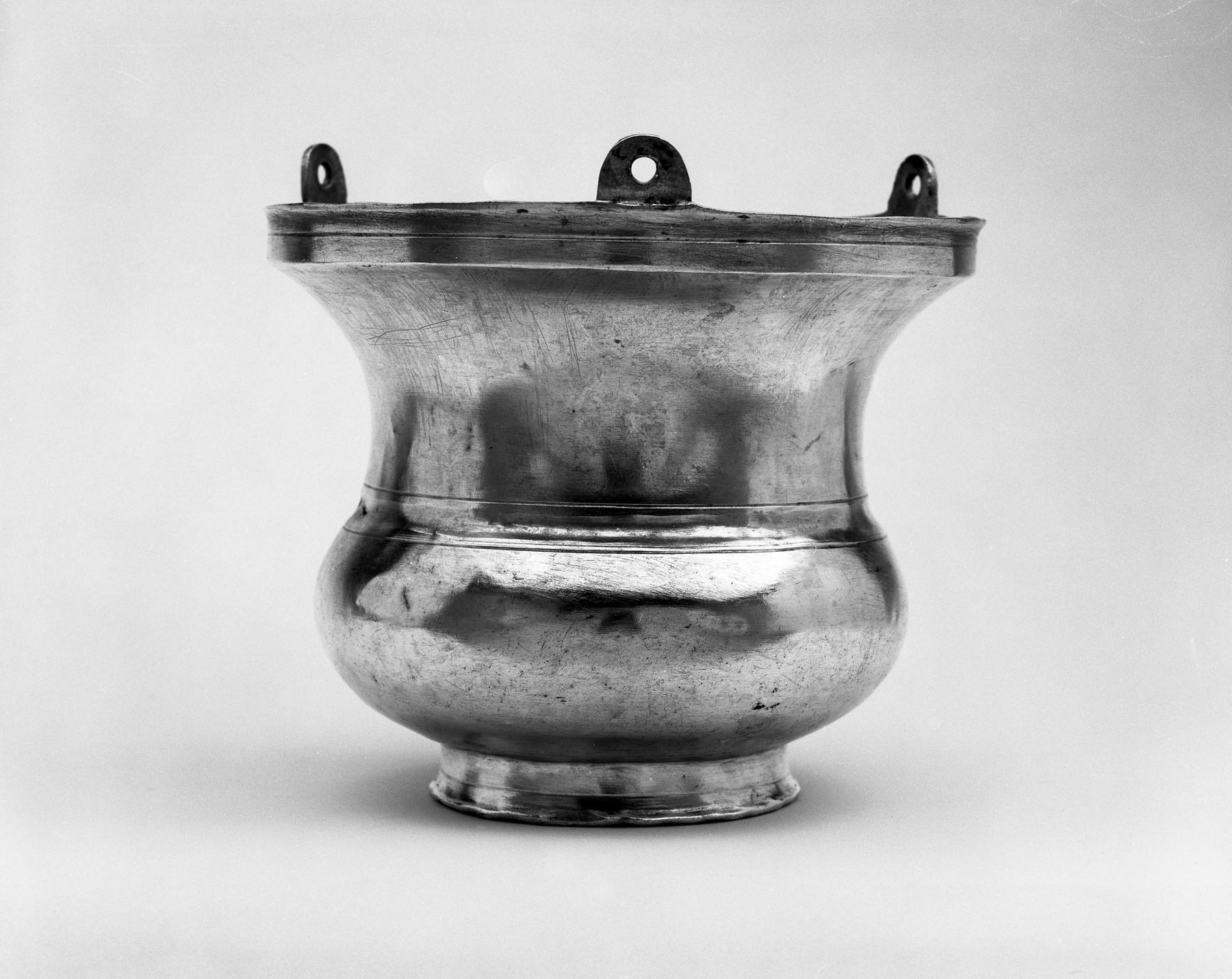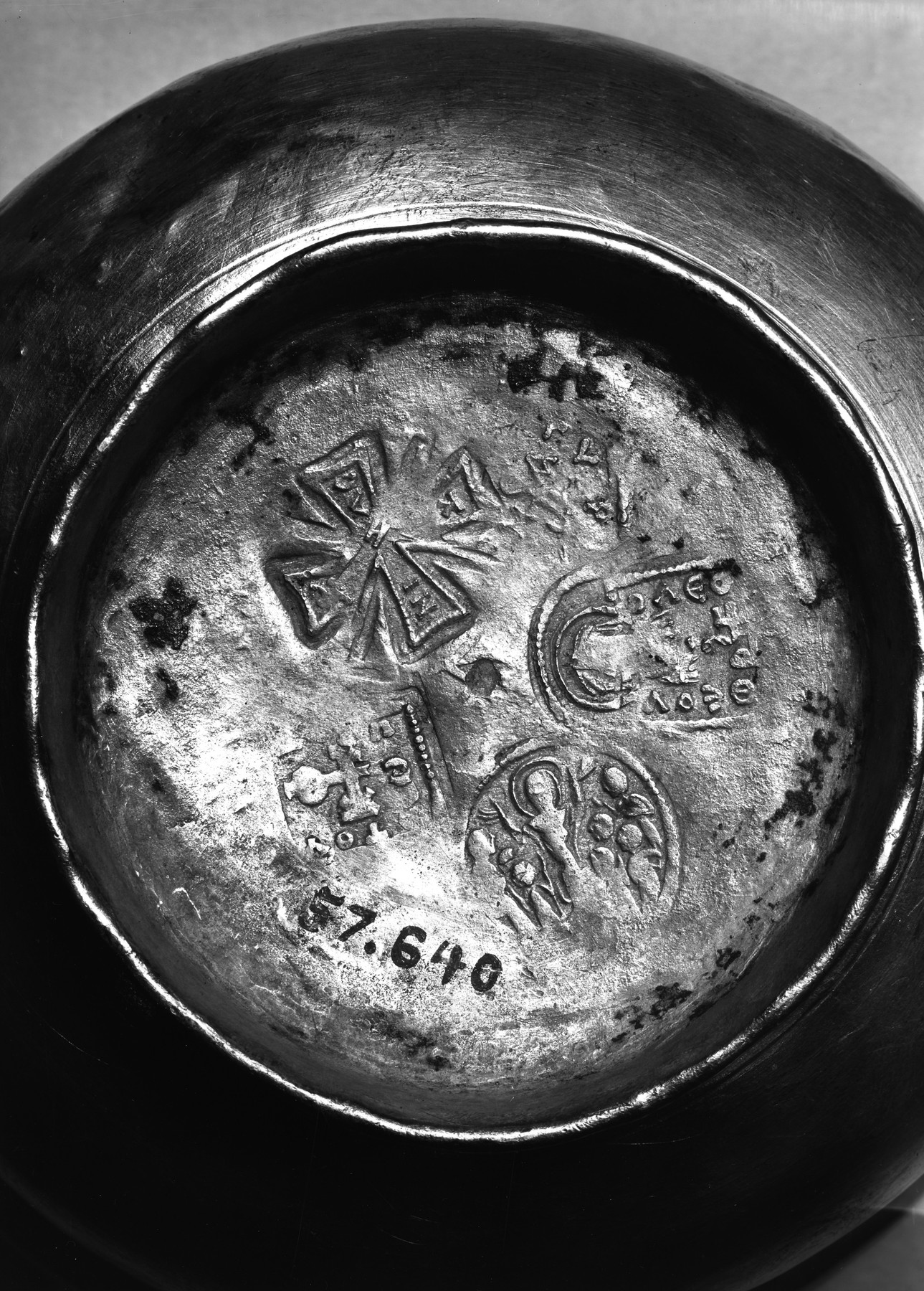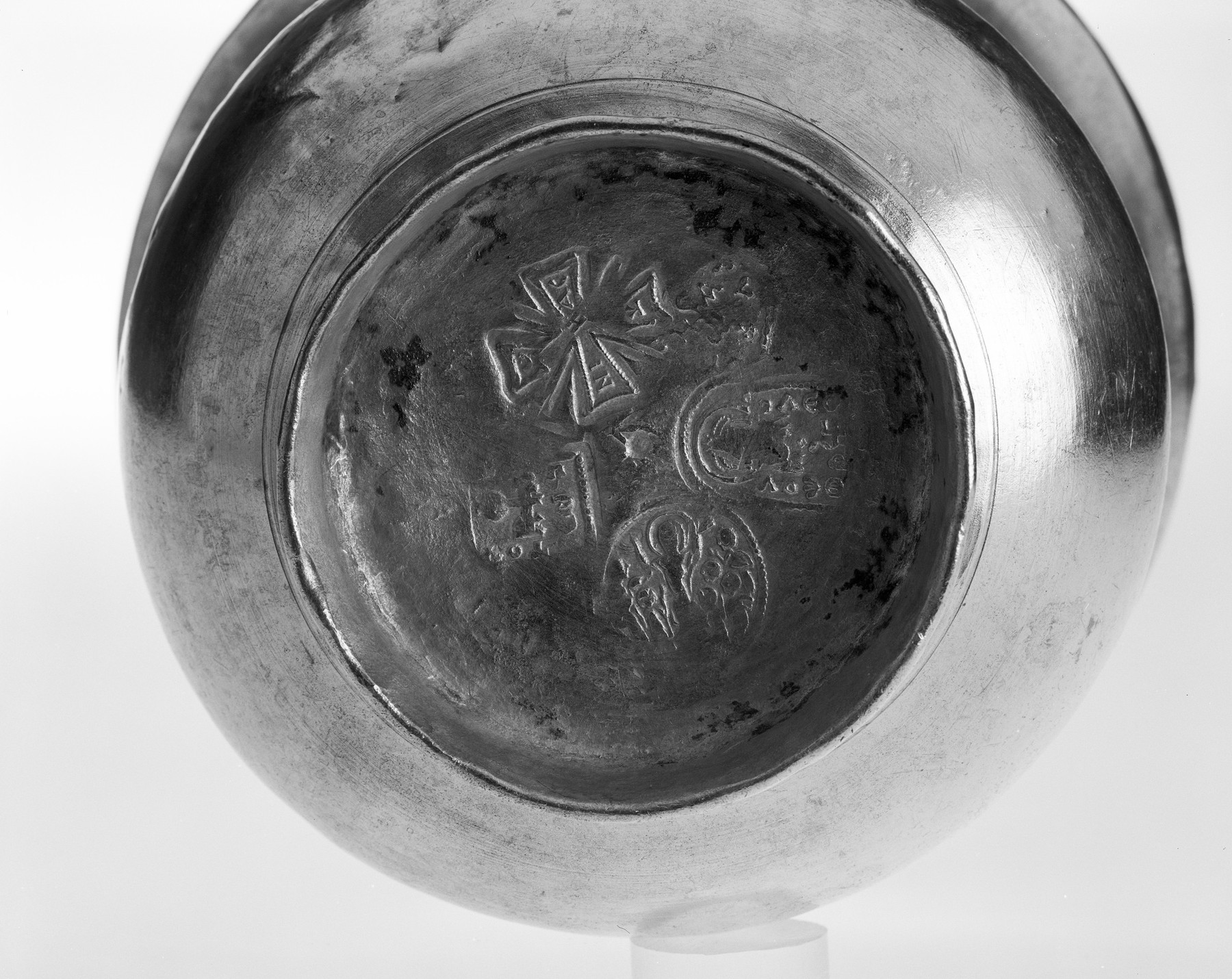Lamp
(Byzantium and Early Russia)
Inscription
Provenance
Provenance (from the French provenir, 'to come from/forth') is the chronology of the ownership, custody, or location of a historical object. Learn more about provenance at the Walters.
[Excavated in Syria, 1908-1910]; Tawfic Abucasem, Hama and Port Said, ca. 1913, by purchase; Joseph Brummer, Paris, ca. 1928, by purchase; Henry Walters, Baltimore, 1929, by purchase; Walters Art Museum, 1931, by bequest.
Exhibitions
| 1986 | Silver Treasure from Early Byzantium. The Walters Art Gallery, Baltimore. |
| 1947 | Early Christian and Byzantine Art. Baltimore Museum of Art, Baltimore. |
Conservation
| Date | Description | Narrative |
|---|---|---|
| 4/1/1947 | Treatment | cleaned; coated |
| 6/9/1959 | Examination | other |
| 10/1/1959 | Treatment | cleaned; coated |
| 1/12/1985 | Technical Report | examined for technical study |
| 7/19/1985 | Treatment | cleaned |
| 9/19/1986 | Treatment | other |
| 2/19/1988 | Examination | technical study |
| 2/20/1988 | Treatment | examined for technical study |
Measurements
5 13/16 x 6 1/2 in. (14.8 x 16.5 cm) (h. x diam.);
rim: 6 7/16 in. (16.3 cm) (diam.);
foot: 3 1/4 in. (8.3 cm) (diam.)
Credit Line
Acquired by Henry Walters, 1929
Location in Museum
Accession Number
In libraries, galleries, museums, and archives, an accession number is a unique identifier assigned to each object in the collection.
In libraries, galleries, museums, and archives, an accession number is a unique identifier assigned to each object in the collection.
57.640










